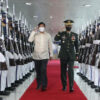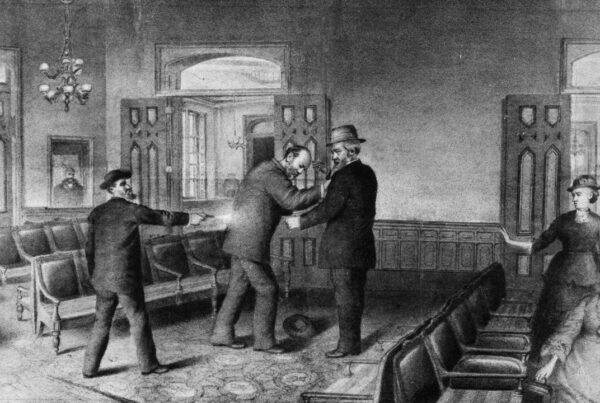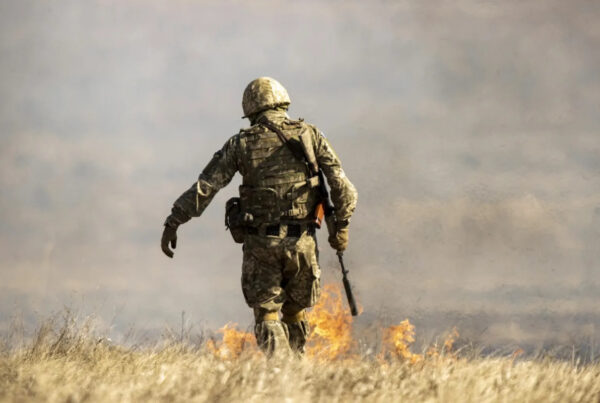This article will explore some of the past, present, and anticipated future problems and initiatives encountered, proposed, or foreseeable by the UK Government in the face of terrorism in the 21st century. It focuses in part on similar attacks that have occurred in the UK and now Canada. The article concludes with one example of a serious international threat where cooperation between rival commercial organisations exceeds the need for competition. The example provided is a scenario exercise to better prepare for future events of this nature. With the upcoming Pan Am/Parapan American Games in Toronto, this example also reviews lessons from the 2012 Olympic Games in the UK.
Lessons From Previous Attacks
Since the attacks on the London Transport on 7th July 2005[1]—that killed 56 and injured more than 700 in the UK’s first ever suicide attacks—approximately 40 other terrorist plots have, so far, been disrupted by the UK Security Services. Some planned attacks have involved preparation for asymmetric attacks similar to Mumbai, blowing up the London Stock Exchange, bringing down airliners, assassinating a British ambassador, and murdering serving members of our armed forces.
Nevertheless, national security can never be absolutely effective; indeed, in 2005, and more recently in 2013, a soldier was murdered on the streets of the UK’s capital city in broad daylight. In 2014, Canada also sadly experienced a similar tragedy. As well, the world has seen the near fatal stabbing of a solider in Paris in 2013 and much more recently, a particularly savage attack in January 2015 against the French satirical magazine Charlie Hebdo. In each case the perpetrators are regarded as Jihadists and are becoming increasingly sophisticated, numerous, and deadly as they enact their own interpretation of Islam.
The 2013 London murder of soldier Lee Rigby, by Islamic extremists Michael Adebolajo and Michael Adebowale, has had unique post-terror attack analysis. The post-event review was published in November 2014 and highlights the severity of the terror threat in the UK; the combined security agencies have a budget of at least GBP£100 million (equivalent to CAD$180 million).[2] The British Intelligence and Security Review Committee made a number of observations in its report including how:
- Michael Adebowale discussed his intent to murder a soldier in graphic terms with another extremist in December 2012. Facebook later identified what system the exchange took place on, but did not believe they had any obligation to report the matter to the authorities. The Intelligence and Security Committee (ISC) chairman, Sir Malcolm Rifkind, and UK Prime Minister David Cameron quickly used the findings to accuse Silicon Valley of not doing enough to flag potential terrorists using their networks to the UK authorities.[3]
- If Facebook had passed on the information to the police, there is a “significant possibility” MI5 could have prevented the attack. The ISC described the internet firm’s policy of not policing its own website as “unacceptable” and accused the firm of “providing a safe haven for terrorists.”[4]
- Altogether the two murderers appeared in seven different security agency investigations, mainly as low-level “subjects of interest.” The ISC states: “There were errors in these operations, where processes were not followed, decisions not recorded, or delays encountered.”[5]
- However, the ISC report goes on to say that: “We do not consider that any of these errors, taken individually, were significant enough to have made a difference.” It also concludes that, “given what the Agencies knew at the time, they were not in a position to prevent the murder of Fusilier Rigby”.[6]
- Michael Adebolajo was a high priority for MI5 during two operations: they put significant effort into investigating him and employed a broad range of intrusive techniques. None of these revealed any evidence of attack planning.[7]
- In contrast, Michael Adebowale was never more than a low level subject of interest and: “the agencies took appropriate action based on the rigorous threshold set down in law: they had not received any intelligence that Adebowale was planning an attack and, based on that evidence, more intrusive action would not have been justified”.[8]
- Surveillance on Adebolajo was carried out at various times between 2009 and 2013, and the final period of surveillance ended on April 11, 2013, just over a month before the murder of Drummer Rigby on May 22.[9]
The Current Situation
Beyond this particular attack, it is worth noting that in the summer of 2014 the Joint Terrorism Analysis Centre (JTAC)—which analyses and assesses all intelligence relating to international terrorism at home and overseas, sets threat levels and issues warnings of threats and other terrorist-related subjects for organisations from a wide range of government departments and agencies, and produces more in-depth reports on trends, terrorist networks and capabilities—raised the UK threat level from ‘substantial’ to ‘severe.’[10] In short, an attack on the UK remains ‘highly likely.’ Commonly today, when the threat assessment changes, it is immediately announced to the British public which, after years of IRA attacks in past decades and the bombs of 2005, tend to be relatively pragmatic in its reaction. Not surprisingly, the decision to go to one threat level below the highest possible (critical) was based primarily on developments in Syria and Iraq, where ISIL presents a significant and worsening threat. More than 500 British nationals have travelled to these countries because of their belief that they will be fighting for an entirely just cause.[11]
ISIL has already struck in Europe; in 2014 four civilians outside the Jewish Museum in Brussels were murdered by one of their terrorists. This group has made no secret about its desire to bring death and destruction to the UK, the United States and to other western countries. Canada is included in potential targets, where the geographical location of ISIL means they are just a few hours flying time away from not only the UK, but most other western countries as well. As the British Home Secretary Theresa May (head of the Home Office responsible, inter alia, for policing in England and Wales and matters of national security.[12] The UK Security Service, M15—which includes JTAC and is directly accountable to the Home Secretary—reported in a speech delivered in November 2014 that, “Some of these organisations may sound remote and distant, but each one of them has ambitions to strike at our citizens and our interests, and each represents a real threat to our national security.”[13]
For the UK Home Secretary, dealing with terrorism is the, “most intensive and time-consuming part of her job,”[14] yet she admits, for obvious reasons, it is also the least well-known and understood. At least once a week she—like all of her predecessors—is briefed on the threat by the Security Service, including Scotland Yard who heads up national counter-terrorism policing in Britain.
The established frequency of such briefings acknowledges the fact that the UK has the comparative disadvantage of, historically, being a greater terrorist target than Canada. Conversely, this has made the UK better at maintaining a terror response. Accordingly, this dynamic/operational resilience formula can be applied relatively easily to most potential targets, including major events like the 2012 London Summer Olympics.
2012 London Olympics
As Toronto will soon host the PanAm/Para PanAm Games, it is perhaps apposite to look back at the most recent Olympic Games held in the UK in 2012 to identify a number of lessons linked to security that might equally apply to Canada. However, security in this article is not seen in isolation since it forms part of a wider and integrated resilience picture. These lessons are first summarised as 10 bullet points and then explained in more detail below:
- An integrated and coherent command, coordination, and communication (C3) architecture proved to be very effective.
- Integrated command can most rationally be explained in a concept of operations (ConOps) structure that describes an overarching C3 structure.
- In 2012 the core C3 principles that worked were: simplicity, subsidiarity, clarity, scalability, flexibility, and continuity/consistency.
- On the topic of consistency, all parts of the wide delivery process worked to a consistent standard of business continuity. To a large extent, this reduced the impact of at least one significant cyber-attack against the BBC and hastened recovery (see below).
- The single concept of security spanned all threat considerations, between physical and cyber in terms of risk before, during, and immediately after the Olympic Games.
- An executive level Olympic Committee had frequently scheduled meetings most often chaired by the Prime Minister, his deputy, or another senior ministers. These meetings provided a speedy collaborative forum that was based on the long-established (classified) Cabinet Office Briefing Room (COBR) model. Here, senior figures unencumbered by operational paraphernalia could collectively identify and agree on strategic priorities in all and likely significant scenarios. COBR was also convened a few hours after the 2015 Paris attack, noting that one can currently travel by train from Paris to London in only a couple of hours.
- Specific Olympic Security briefings usually followed these regular meetings to discuss intelligence and security—above restricted level—and to receive threat updates and identify actions to take, including consistent media messages and updates if required.
- The Gold, Silver & Bronze command system, used routinely for all UK major incidents, also operated throughout the Olympic Games to provide scalability, a familiar command platform and recognised authority levels based on well understood roles and responsibilities used often in the UK. GSB does not depend on the names of individuals since roles are more important than ranks. Whoever has the title Gold at any time has the strategic ‘I think’ role, Silver has the tactical ‘I direct’ role and Bronze is the operational ‘I do’ roles.
- The private security company G4S failed to provide adequate guards (unarmed security staff recruited on a temporary basis) at the start of the Games, which suggested much closer attention by the Olympic planners to private sector service level agreements was required.
- The need to carry out frequent and widely disseminated safety and security briefings was recognised well in advance of the Games, as well as during the event.
One of the many vital processes that spanned all aspects of the 2012 Games was the routinely updated Olympic Safety and Security Strategic Risk Assessment (OSSSRA).[15] This was a classified cross-government document that incorporated expertise from a wide range of government departments and agencies.[16] It contained assessments of relative severities from a wide range of major accidents, natural events (collectively known as hazards), and malicious attacks (known as threats). OSSSRA also contained assessments of potential risks posed by serious and organised crime, as well as public disorder and domestic extremism that may pose safety and security risk during the Games.[17]
Crucially, the OSSSRA identified aspects of safety and security that were unique to hosting the Games. In particular, there were issues that required specific planning over and above those carried out normally by governments and other agencies’ existing risk assessment processes.[18] The terrorist threat to the 2012 Olympic Games was broadly divided into four categories:
- First was the Al-Qa’ida (AQ) sponsored plot. Although AQ leadership had been weakened, the aspiration to attack remained;[19]
- Second, the ‘lone wolf’ was perhaps the bigger threat and could be extended to non-Jihadist terrorism, as seen in the case of the Norwegian bomber Anders Behring Breivik in 2011;[20]
- Third, there was a risk of Irish Republican dissidents attempting to disrupt the Olympics. Since their last successful bombings in England in 2001, police sources in Northern Ireland believed—and still do—that they aspire to attack again but either have not managed to do so or have chosen not to;[21]
- Fourth, there was the threat of assassination. Some 120 heads of state attended the Games and many had enemies who may have links—or even live in the UK—that were/are not followed here because they was no threat to UK security. In effect, the Olympics might have attracted someone else’s terrorist problem to the UK because of the opportunities and publicity the Games afforded. This was the case in 1972 when eleven members of the Israeli team and a German police officer were killed by Palestinian terrorists in Munich.[22]
Most importantly in the case of the London Olympiad (more accurately UK, as venues stretched across the country), a single command structure used by all emergency services in the country for the past 20+ years (known as Gold, Silver & Bronze) was overlaid on the Games (see above). This coordinated all command actions right across the operation at the levels of Strategy, Tactics and Operations, above separate tasks within this framework such as security, access routes and transport. There was also a Command Coordination and Communications (C3) model that integrated every relevant agency to protect what was the greatest sporting event in the world, not least against the threat of terrorism.
To help gather useful experience across different countries, individuals from different governments who had closely observed other previous big sporting events, such as the 2010 Winter Olympics in Vancouver, brought lessons to the planning process. In this way, C3 procedures from many UK ‘routine’ public order fixtures, along with experiences from abroad, led to a coherent Concept of Operations (ConOps) that was understood by everyone who needed to know.
One essential ingredient to achieve this was simplicity, where the first of six core C3 principles stated that all arrangements should be clear and readily comprehensible. For example, the entire (executive level) C3 document was only 20 pages long for a significantly complex event that cost the equivalent of CAD$15 billion to deliver. This document embodied the high level ConOps for those aspects of C3 that, in particular, crossed the boundaries between different domains and government departments. The other five core C3 principles were:
- Subsidiarity (decisions to be taken at the lowest appropriate level), continuity/consistency (existing processes used wherever possible);
- Clarity (clear information flows, accountability, roles and responsibilities);
- Scalability (arrangements to be easily scalable); and
- Flexibility (procedures to be flexible whilst reimaging within agreed broad parameters).
In addition, a crisis management strategic oversight was set out in the C3 document—bearing in mind the principles of subsidiarity and scalability—that detailed how crises would have been managed.
While it is true the 2012 Olympic Games have been rightly criticised for some security related problems at the start of the event, almost all of the issues stemmed from the failure of one private security/manned guarding company appointed to provide much of the basic operational security and to supply adequate manpower at the initial stages of the task. It is known that the Games did attract terrorists, although not always being in the same country as the event. A cyber-attack was launched from an overseas location against the BBC that very nearly stopped an on line channel from broadcasting at the start of the Games.
G4S admitted at the time that it was about to fall short of sufficient manpower and, consequently, a contingency plan to provide additional military personnel was soon initiated. Notwithstanding G4S’s failure to deliver—which should have been spotted earlier—the contingency plan reflected reasonably well on the Game’s plans where extra manpower was on reserve for any major incident, albeit not exactly intended for this one. In the end, trained military staff probably did a much better job than lesser trained private security guards. There was always additional police and military reserve on standby, even when some had to be relocated to ameliorate G4S problems.
The official National Audit Office review of the Games stated:
“When it became clear that G4S could not provide the full number of venue security guards required, effective contingency plans were implemented. On 11 July 2012 G4S told (the organisers) that it would not be able to provide the full number of guards it had contracted to supply, which had potentially serious implications for security at the Games. Additional military and police personnel were rapidly deployed to fill the gap and the security operation passed off without any major problems. G4S accepted responsibility for its failure to deliver fully on the contract, and acknowledged a series of failings in its project management and execution [sic].”[23]
Despite a widely praised and successful event, it is notable that the planning for venue security at the London Olympics did not always run smoothly. The final size of the security requirements only emerged in 2011 as venue plans and operational plans were finalised. During 2011 the number of guards required increased to over 20,000, from the previous estimate of 10,000. The 2007 Public Sector Funding Package contained insufficient provision for venue security until 2010, and has since had to cover costs of over £500 million (CAD$908 million).[24] This was only possible because contingency funds had become available from within the Public Sector Funding Package.[25][26]
Recent Successes
For countries like the UK, that consider themselves to be targets for terrorist attacks, it is worth noting that:
- Between January 2009 and December 2010 over 600 people were arrested for terrorist-related activity, which is more than any other European country;
- Since April 2010, 753 people have been arrested for terrorism-related offences, 212 have been charged, and 148 have been successfully prosecuted;
- 138 people are now behind bars serving sentences for terrorism-related offences;
- Since the start of the current coalition government, the Counter-Terrorism Internet Referral Unit has secured the removal of 65,000 items from the internet that encouraged or glorified acts of terrorism. More than 46,000 of these have been removed since December last year;
- At present, content relating to ISIL, Syria and Iraq represents approximately 70% of the Counter-Terrorism Unit’s caseload.[27]
Government Strategies
The Home Secretary also chairs a weekly security meeting that reviews ongoing work aimed at defending the public from the risk of a terrorist attack. In one of these meetings the Home Secretary is on record as stating:
“Plots that aim to kill hundreds and even thousands of people, and plots that target specific victims because of who they are and what they stand for. Plots that try to wreak enormous damage on our economy. Cyber threats from hostile foreign states and from terrorist organisations. Radicalisation taking place behind closed doors in mosques, homes and community centres, but also in schools, universities and prisons. Hateful, radicalising propaganda disseminated in full view online and via social media. And serious attack planning, conducted online, too often protected by everyday technology from the watchful eyes of the intelligence agencies.”[28]
Cyber threats from a hostile foreign state particularly hit the headlines in late 2014 when the US Government said that it had irrefutable intelligence that the North Korean Government launched an attack. This attack Sony Pictures in the US occurred because of the planned cinematic release of a comedy film entitled The Interview, which depicts a plot to assassinate North Korean leader, Kim Jong-un. Sony Pictures withdrew the film from all cinemas across the world. This action was later criticised by President Obama and others.
There is more that should be done and it would be misleading to imply that Britain always has a model response to terrorism. The UK government is still trying to make greater and attainable headway to counter wider extremism, which is often not violent in its nature but is indelibly linked to terrorism. This forms one part of the Counter Terrorist Strategy, code named CONTEST, which has four primary work streams:[29]
- Pursue: to stop terrorist attacks;[30]
- Prevent: to stop people becoming terrorists or supporting terrorism;
- Protect: to strengthen UK protection against a terrorist attack; and[31]
- Prepare: to mitigate the impact of a terrorist attack.[32]
Because of problems in the past, the ‘Prevent’ work stream has recently been reformed. This has been done by separating ‘Prevent’ work from the integration work led by the Department for Communities and Local Government. ‘Prevent’ attempts to tackle all forms of terrorism, not just Islamist-related terrorism and following earlier mistakes new procedures are now in force to hopefully ensure the UK government only works with organisations that respect British values to make sure that any funding does not find its way to extremist organisations. The ‘Prevent’ objectives have also been changed recently to deal with non-violent extremism, as well as violent extremism while noting that four base line factors are likely to continue to nourish domestic and international terrorism, to a greater or lesser extent:[33]
- Conflict and instability;[34]
- Aspects of modern technology;[35]
- A pervasive ideology; and[36]
- Radicalisation.[37]
In the past few months the UK Government has advised the courts that article eight of the European Convention on Human Rights—the right to a family life)—is a qualified and not absolute right. It also has six ‘deportation with assurance’ agreements with countries including Jordan and Morocco so it can deport people in line with the UK human rights obligations. However, for several people in Whitehall, the occasionally pervasive existence of European law—as some perceive it—remains a handicap rather than benefit when it comes to UK national security.
On the UK legislation horizon is a new Communications Data Bill,[38] which is apparently being delayed because of disagreements in the British government. As Theresa May put it not long ago:
“We are engaged in a struggle that is fought on many fronts and in many forms. It is a struggle that will go on for many years. And the threat we face right now is perhaps greater than it ever has been and we must have the powers we need to defend ourselves…because the way in which we communicate is increasingly online, the ability of the authorities to obtain the data they need is declining rapidly. Unfortunately there is no agreement in the Coalition – or for that matter with the Opposition – about the need for this and so we are going to have to wait until after the general election to address fully this increasingly urgent problem. But I remain passionately convinced that our national security – not to mention our ability to fight back against organised crime groups and networks of child abusers – means we need this Bill [sic].”[39]
The UK government plans intended to be enacted in the near future include:[40]
- A further reform of ‘Prevent’ work stream by legislating to put Channel—the existing successful programme for people at risk of radicalisation—on a statutory basis to be more consistent across the country.[41]
- Placing a statutory duty on schools, colleges, universities, the police, prisons, probation providers and local government to help prevent people from being drawn into terrorism.[42]
- Strengthen the presently inadequate Terrorism Prevention and Investigation Measures (TPIM) regime. TPIMs give the British police and security services legal powers to disrupt and restrict the movements of terror suspects and their contact with named associates when the government cannot disclose sensitive intelligence material in an open court, or if they are a foreign national unable to be deported. In future, TPIM subjects can be relocated to different parts of the country.[43]
- The police and designated Border Force officers acting on the directions of the police will have the power to seize travel documents—including tickets and passports—at the border. This can be done for up to thirty days if they have reasonable suspicion that a person plans to leave the UK for the purpose of engaging in terrorism-related activities.[44]
- Temporary Exclusion Orders controls the return of any British citizen suspected of involvement in terrorism-related activity abroad to the UK. This is enforced through the cancellation of travel documents and the inclusion of the individual’s details on a watch list, including the ‘no-fly’ list. The plan ensures that if airlines do not give the British Government passenger information, or comply with UK security screening rules, they cannot fly to the UK.[45]
- Preventing UK-based insurance firms from providing cover for the payment of terrorist ransoms. The UN estimates that ransom payments raised up to £28 million, equivalent to CAD$50 million, for ISIL in the last twelve months alone.[46]
- Internet providers to retain Internet Protocol (IP) address data to identify individual users of internet services.[47]
- Establish a new independent privacy and civil liberties board to support the UK independent Reviewer of Terrorism Legislation.[48]
Long-Term Projects & Concerns
But despite CONTEST and relatively new proposals by the British Government and the best efforts of the UK security services and organisations, such as the Muslim Council of Britain, small but hostile Islamist networks remain stubbornly in place. Their propagandists have in one way or another, infiltrated schools, charities, prisons, and universities. Eradicating their influence will take years, if not decades, as will opening up the often closed communities whose links to what they see as their homelands are sometimes far stronger than to the country where they presently live.
Sometimes, as in the case of those who murdered British soldier Lee Rigby in London, the perpetrators, do not always exist in closed communities. But they are nonetheless influenced by Jihadist propagandists and were already known to the security services—but only as dots on a radar screen. Intelligence and resource capability having consigned them to a lower threat level than sad








